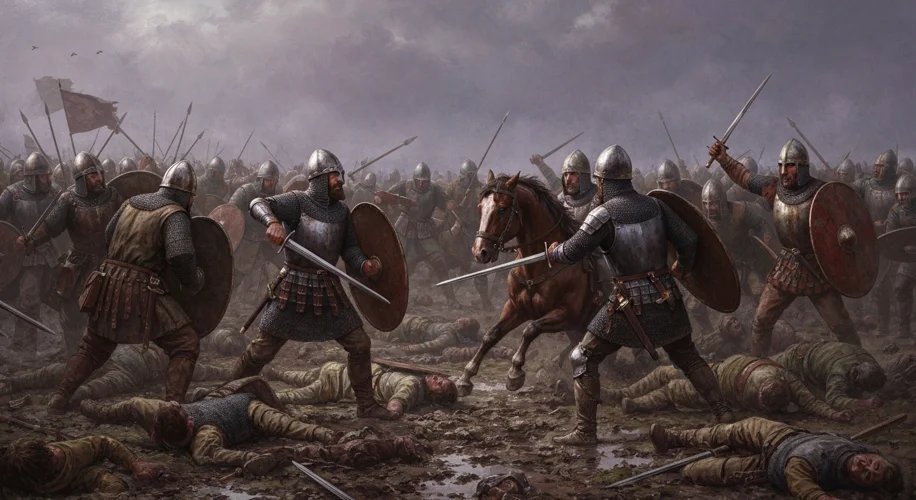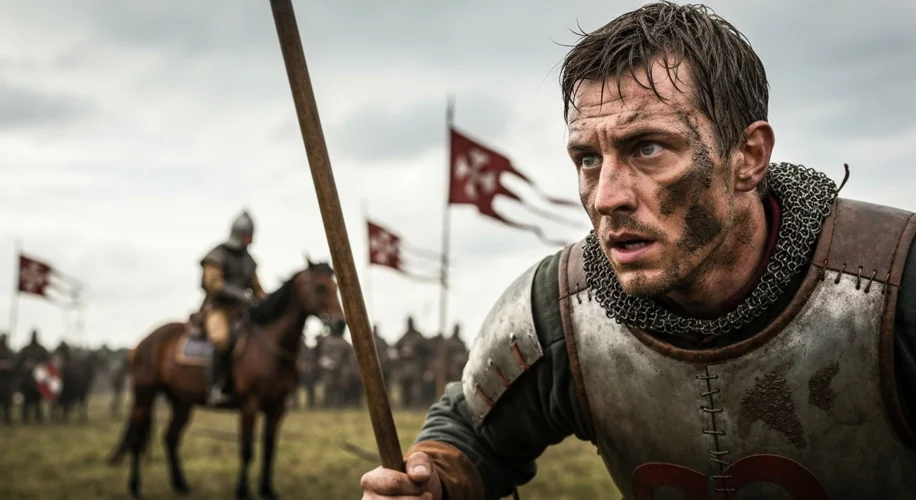The year is 1066. The air thrums with the clash of steel, the guttural roars of men, and the desperate cries of horses. Rain slicks the battlefield, turning the earth into a treacherous mire. Amidst this brutal ballet of death, a crucial question hangs in the balance: who leads the Norman forces? If you were a humble soldier, perhaps a Breton fighting for Duke William, and you saw your leader’s distinctive helmet tumble from his head, would you instantly recognize him? The answer, fascinatingly, is likely no.
William the Conqueror, though a towering figure in history, was not a man whose face was widely known by his common soldiery, especially in the chaos of battle. The very nature of warfare in the 11th century was vastly different from our modern understanding. Imagine the scene at the Battle of Hastings, fought on October 14th, 1066. The Norman army, a formidable force of infantry, archers, and cavalry, would have been a sea of similar-looking warriors. Their armor, while varied in quality, often consisted of mail hauberks that covered the body and limbs, and conical helmets with nasal guards that obscured the face.

For the average soldier, visual recognition of their commander would have been an incredibly difficult, if not impossible, task. Commanders of high status would have been identifiable by their banners, the distinct heraldry carried aloft by their standard-bearers. These banners, often emblazoned with symbols like the lion or the dragon, served as rallying points and visual cues on the battlefield. However, these could be lost, captured, or obscured by the dust and smoke of battle.
William himself, as chronicled by historians like William of Poitiers and Orderic Vitalis, was known to lead from the front. This was a common tactic among Norman leaders, a way to inspire their troops and demonstrate bravery. Yet, this very proximity to the fighting could be perilous. During the Battle of Hastings, there was a critical moment when rumors spread through the Norman ranks that William had been killed. The Bretons, fighting on the left flank, began to retreat. Seeing his men falter and hearing the desperate shouts of “The Duke is dead!”, William, according to tradition, rode into the thick of the fray, tore off his helmet, and shouted, “Look at me! I am alive and by God’s help I shall conquer!”
This dramatic act was not about facial recognition for the masses. It was about proving his presence, his vitality, to those in his immediate vicinity and, by extension, to the wider army. For the soldiers who saw him, it was the sight of their Duke, unhorsed perhaps, helmetless, but undeniably alive and leading. It was a psychological maneuver, a powerful assertion of leadership amidst utter pandomimium.
What were the chances of a random soldier recognizing William’s face? Extremely slim. Most soldiers would have never seen their duke outside of a grand procession or a carefully orchestrated appearance. They knew him by his reputation, his banners, and the authority he projected. His physical features, unless one was part of his close retinue or had served alongside him for years in peacetime campaigns, would have been largely unknown.
Consider the sheer scale of visual information being processed by a soldier in battle. Their focus would be on survival: identifying immediate threats, following the movements of their unit, and responding to orders. The face of their commander, even if visible, would likely be just another feature in a landscape of danger and confusion. Furthermore, the standards and pennons carried by knights and nobles served as far more reliable visual identifiers than any individual’s face. These symbols were the true faces of leadership on the battlefield.
Therefore, if William had removed his helmet, the soldiers who would have recognized him would have been those closest to him – his knights, his banner-bearers, his personal guard. For the vast majority of the Norman army, it was the act of him appearing, of his banner being seen again, and the renewed roar of his voice that would have signaled his survival, not the instant recognition of his familiar features. In the brutal, fog-of-war reality of 1066, leadership was recognized through presence, action, and the symbols of power, not necessarily through a shared intimacy with a commander’s face.

